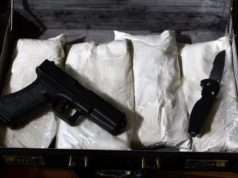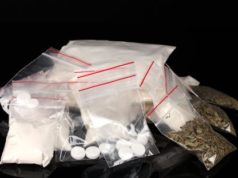
When a crime occurs, the crime scene is the first and most crucial step towards solving the case. A crime scene is a location where a crime has taken place and is typically preserved until the investigation is complete. The process of investigating a crime scene requires specialized knowledge, skill, and attention to detail. In this article, we will discuss the essential facts to know about a crime scene investigation.
Types of Crime Scenes
There are various types of crime scenes, and investigators handle each one differently. These include:
–Vehicle crime scenes: This includes any crime that occurred inside or outside of a vehicle.
–Indoor crime scenes: A crime that occurred inside a building, such as a home or office.
–Outdoor crime scenes: A crime that took place outside, such as in a park or alleyway.
–Death scenes: Any crime scene where a person has died, such as a homicide or accidental death.
The Importance of Preserving the Crime Scene
It is imperative to preserve the crime scene to obtain crucial evidence and maintain the integrity of the scene. This includes minimizing foot traffic, avoiding contamination, and preserving the physical state of the scene. The integrity of the scene should be maintained until all necessary evidence has been collected, documented, and processed.
Evidence Collection
The collection of physical evidence is an integral part of the criminal investigation process. It often involves collecting trace evidence such as hair, fibers, and DNA samples, as well as any relevant items that may have been used as weapons. Investigators must take every precaution to avoid contaminating the evidence and carefully document where it was found and how it was collected.
Forensic Examination
Physical evidence collected at a crime scene is examined in a laboratory by forensic experts. Their examination can determine several key pieces of information about a crime, including the perpetrator’s identity and whether a crime was committed. Examination of physical evidence can include DNA analysis, fingerprint analysis, and ballistics testing.
Documentation of the Crime Scene
The documentation of a crime scene is a crucial element of the investigation process. This includes photographs, videos, sketches, and notes about the layout of the scene, any relevant items, and where everything was found. Accurate documentation helps investigators create a detailed picture of the scene and can be used in court as evidence.
Conclusion
A crime scene investigation can be a complex and challenging process, requiring a high level of knowledge, skill, and attention to detail. Preserving the scene, collecting evidence, forensic examination, and documentation are all essential components of the investigation process. Understanding these basic facts about a crime scene and its investigation can help individuals appreciate the importance of the work done by law enforcement, forensic experts, and criminal investigators.
What is a Crime Scene?
A crime scene is a tangible location where an illegal action took place. A crime scene is comprised of the area, where the majority of physical evidence is retrieved by a law enforcement agency, crime scene investigators or personally, or in some circumstances, a forensic scientist. These individuals will inspect the crime scene, under a strict protocol, to gather evidence in order to evaluate suspects or possible leads to the crime. The evidence collection process is arguably the most crucial aspect to an investigation.
Evidence Collection
A crime scene, in the most general sense, is the location wherein evidence of an altercation or crime may be observed and collected. A crime scene is not necessarily where the actual crime was committed, for there are classifications (primary, secondary and tertiary) of crime scenes. For example, a law enforcement agency may use a warrant to inspect an individual’s home. The residence may not be the location of the underlying wrongdoing; however, crucial evidence may be found there. Another example of the different classifications of crime scenes can be observed in the case of a kidnapping. An offender may kidnap at individual at one location (the primary crime scene), then transport the victim (the vehicle used for transportation is the secondary crime scene), commit another crime (such as rape or murder) at a different location, then dispose of the body at a fourth crime scene.
In the above kidnapping example, all the locations where there is the potential or existence for the recovery of evidence must be handled in a uniform manner. Each crime scene must be protected from tampering or interference of any kind. The protocol which is implemented to impede from the comprising of evidence is administered to preserve all forms of trace evidence—evidence that can be used to target or locate a suspect.
Protecting evidence is typically accomplished by taping a wide area around the crime scene; this process prevents individuals, who are not a part of the investigation, from accessing the scene. The conditions at the crime scene must be protected and carefully recorded; when recording has taken place, items or evidence can be removed for laboratory analysis.
Various legal concepts impact the usefulness of evidence in the court system; a chain of custody applies to the recovery of evidence at a crime scene, whether or not an actual crime occurred at the specific location.
What Law Enforcement Bodies are involved in a Crime Scene?
A number of members of the law are involved in a typical investigation at a crime scene. Police officers, crime scene investigators as well as a team of forensic scientists are usually called to investigate and collect evidence. Each member of the criminal justice system possess crucial roles revolving around the collection and photography of evidence.




























